The Reflector Oven
The Reflector Oven came into general use in the American Colonies at the end of the 18th Century and was common feature about the hearths in the 19th Century until about 1850. It was at that time that the average family found cast iron cooking stoves affordable. Until that time, the reflector oven was the loveliest way to roast a turkey.
Elizabeth Moxon wrote in her cookbook in 1764: “Put her (turkey) on a spit and roast her before a slow fire; you may lard your turkey with fat bacon; if the turkey be young, an hour and a quarter will roast it.” Turkeys, until well into the 20th Century, were not the heavy chested birds we know today, so the cooking time was much shorter.
The Chapman-Hall House and the Pownalborough Court House both have reflector ovens in their collections. A definite improvement over the dangle spit hung from the lug pole or the roasting spit which sat in hooks affixed on the andirons. The reflector oven was also used for roasting pieces of meat, such as beef and pork roasts, chickens, and game birds.
The design of the oven with its rounded back, would catch and keep the heat of the fire close to the food being roasted.
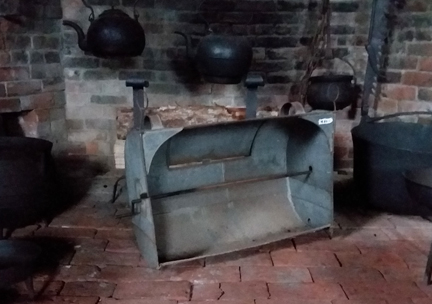
In addition, as the oven had a bottom that curved around to the front opening, all of the juices dripping from the meat would be caught. The ovens were made with a little spout on one side; the spout allowed for the juices to be poured off easily.
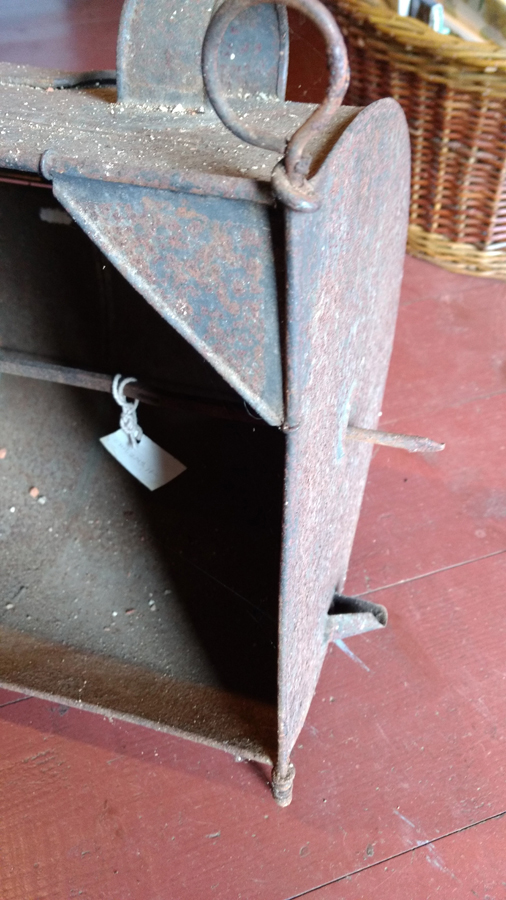
The door in the back of the reflector oven allowed for easy basting. Once the oven was in place in front of the fire, at the proper distance, it would not be moved, the little door solved the problem of getting to the meat to baste.
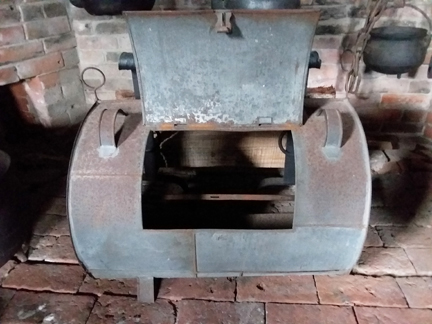
The mechanism which allowed the meat to be cooked evenly was divided between the cook and the tool/oven. Reflector ovens are made with a circular series of holes on one side, a slit opening on the other.
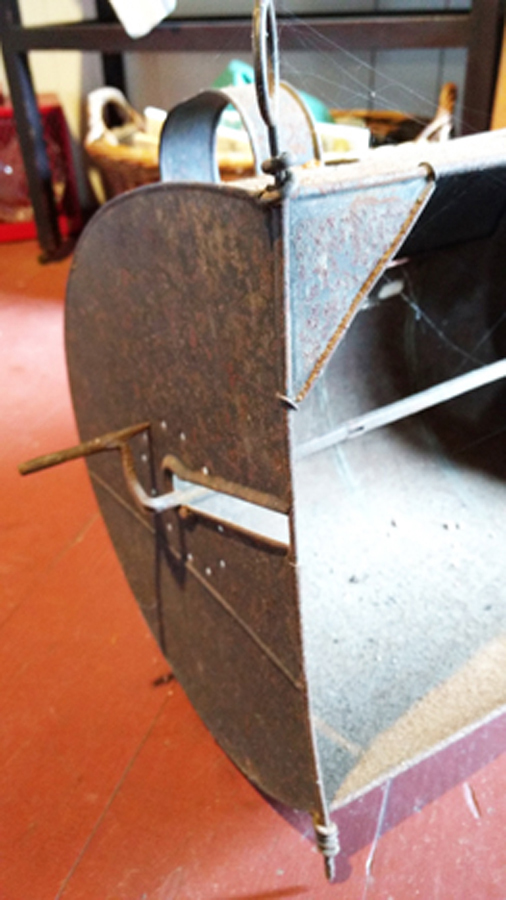
The spit on which the meat was fixed had a handle and pointed finger one side and was flat at the opposite end. Once the meat was settled on the spit and the spit placed in the inside the oven, the little finger was position in one of the holes. Every so often the cook would turn the spit to the next hole to ensure the meat was cooking evenly – thus “done to a turn.”
As you enjoy your holiday turkey, give a moment’s thought to Mrs. Goodwin and Mrs. Chapman checking their turkey to see if it was “done to a turn.”
Louise Miller, LCHA Education Director
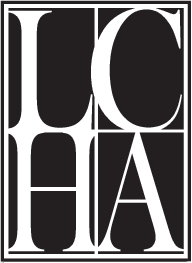
 Newsletter
Newsletter Join LCHA
Join LCHA Donate Now
Donate Now